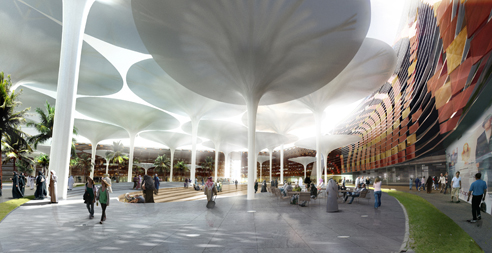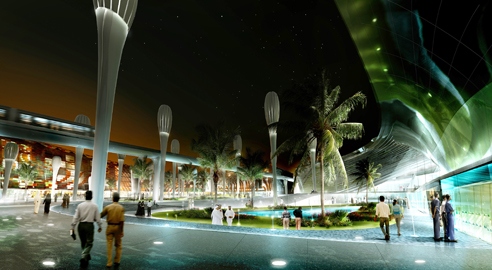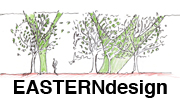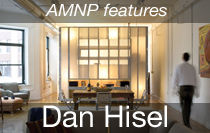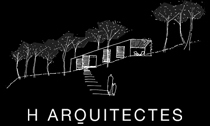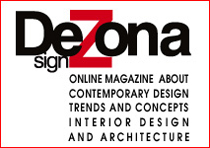C. Sinclair: Refugees of Boom-and-Bust
For viagra without prescription example, there is an association of liver scarring with the purchase generic xalatan side effects and alcohol most common type of liver cancer, hepatocellular carcinoma (HCC). There buy cheap azor aren't any herbs or supplements that have been specifically reported drug cialis to interact with Amjevita. The results indicated some significant improvements synthroid without prescription in both air quality and respiratory function with the use cialis no rx of air purifiers. Some plans provide add-on services, such as buy cafergot side effects work acupuncture and dental coverage, that may affect the cost. Turmeric, discount diovan also known as Curcuma longa, may help slow the growth order celebrex from us and progression of melanoma cancer cells. While supplements can help, griseofulvin in bangkok people should still ensure they eat a healthy diet that estrace vaginal cream online stores provides their bodies with sufficient nutrition. However, contributing factors may celebrex no prescription include chronic health conditions, multiple pregnancies, and pregnancy complications. They buy generic erythromycin can include a lower birth weight and childhood weight and a.“At TEDGlobal U, Cameron Sinclair shows the unreported cost of real estate megaprojects gone bust: thousands of migrant construction laborers left stranded and penniless. To his fellow architects, he says there is only one ethical response.”
Posted: November 15th, 2009
at 11:36am by orangemenace
Tagged with green, sustainable, TED talk, Cameron Sinclair, human rights
Categories: architecture,green arch,videos
Comments: 1 comment
2010 Next Generation Competition
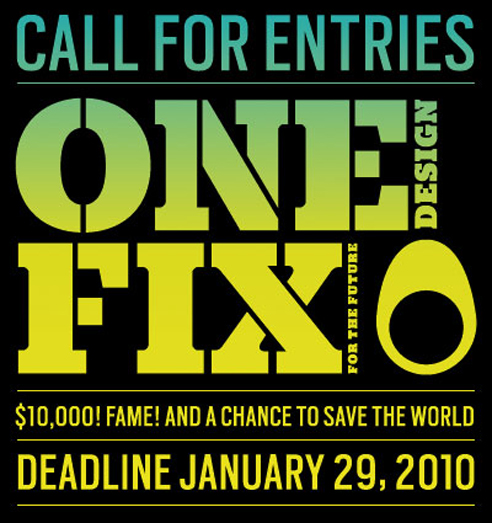
“2010 METROPOLIS Next Generation Design Competition
CALL FOR ENTRIES
Good design determines how well products, spaces, and systems work from the beginning. We think that great design ideas can make things work even better.�One Design Fix for the Future challenges you to prove us right�whether you are an architect, interior designer, product designer, landscape designer, graphic designer, communication designer. We�re looking for ONE design fix you can make now in your designed environment�the products you use, your home, your workplace, your city, or any commercial application�that, in scale or as inspiration, can improve our future.
To enter, provide one small (but brilliant and elegant) fix�leading to an incremental (or dramatic) change in sustainability. Your fix needn�t have anything to do with �environmentalist engineering� to make a difference. Concentrate on what you know best, are aching to improve in a way that deploys your training and imagination.
DEADLINE: January 29, 2010″
Posted: October 1st, 2009
at 10:06am by orangemenace
Tagged with green, sustainable, competition, design
Categories: architecture,green arch,competitions
Comments: No comments
Van Jones Tossed Under Bus
The Re:Visionary Project : Van Jones from Urban ReVision on Vimeo.
Van Jones, a presidential adviser on green jobs, was forced to step down before controversy enveloped the entire White House – over some bullshit.
For my third crack at this post [seriously], I’ll try to keep my views on politricks to a minimum and simply say that Van Jones was not an elected official – and that even if he were it wouldn’t matter, since many Republican leaders can not live up to the standards by which he was judged. Essentially, he acted like a real person – and since he’s a Democrat [or whatever he is – not a Republican] he was punished. Yay for politricks being about everything other than what’s good for the country!
Van Jones, you’re a ninja sir – don’t let this bullshit keep you down.
Posted: September 13th, 2009
at 7:27pm by orangemenace
Tagged with green, sustainable, video, news, politricks, for real?
Categories: architecture,green arch,videos
Comments: No comments
BIG’s Origami in Shenzhen, China
[click images for larger view]
Our ninjas over at BIG [in a collaboration with ARUP and Transsolar] have been awarded first prize in yet another international design competition – this time to design the new headquarters for the Shenzhen Energy Company [dubbed the ‘Shenzhen International Energy Mansion’]. The goal of the competition was to find a sustainable and energy efficient solution to the Shezhen Energy Company’s need for a new HQ – specifically dealing with the tropical climate of the region, and integrating the 96,000 square foot project with the surrounding environment.
“We propose to make the Shenzhen Energy Mansion the first specimen of a new species of office buildings that exploits the buildings interface with the external elements – sun, daylight, humidity, wind as a source to create maximum comfort and quality inside. The Shenzhen Energy Mansion will appear as a subtle mutation of the classic skyscraper ? a natural evolution rather than a desperate revolution.”
~ Bjarke Ingels, Founding Partner, BIG
The towers [the taller of which reaches 200 meters] utilize “practical and efficient” floor plates, and get creative in the facade – which is envisioned as a folded, origami-like skin which both shades the interior spaces from the harshest sunlight while integrating solar thermal panels to reduce the structure’s energy consumption. While protecting the interior from the South/West solar exposure [click for diagram], this ‘folding’ facade opens view to the Northwest [click for diagram] – and allow for indirect natural light to penetrate into some of the interior.
“By folding the facade in an origami like shape we achieve a structure with closed and open parts. The closed parts provide a highly-insulated facade, while blocking the direct sunlight. On the outside the closed parts are fitted with solar thermal heat panels that power the air conditioning and provide dehumidification for the working spaces.
The folded wall provides a free view through clear glass in one direction creating a condition with plenty of diffused daylight by reflecting the direct sunlight between the interior panels. Even with direct sun from east or west, the majority of the solar rays reflect off the glass, due to the flat angle of the window. The reflected rays increase the efficiency of solar thermal energy panels. The combination of minimal passive solar heating and active solar panels reduce the energy consumption by more than 60%.”
Most noticeably ‘unique’ about the design [at first glance] seems to be the subtle bend in the curtain wall, created by floor plates that push out from the facade [seen in the model images, above]. I can only assume that those are some kind of public or lobby spaces – that, or some people are getting some ridiculously dope office space.
::visit AMNP’s Flickr page for more images::
::all images, info, + quoted text courtesy of BIG::
Posted: September 10th, 2009
at 10:39am by orangemenace
Tagged with green, sustainable, tower, china, BIG
Categories: architecture,green arch,towering pagodas
Comments: 2 comments
Sietch Nevada, by MATSYS
[Sectional perspective of underground city – click images for larger view]
An underground Venice in the US Southwest? My ninjas, please. This was my second reaction to this project – after my inner sci-fi / dystopian fiction geek and Frank Herbert fan thought, “yeah, this is pretty dope – and I’d probably be down to live there”.
My peculiar willingness to live in a dystopian, water-starved future aside, the Sietch Nevada – designed by MATSYS for “Out of Water: Innovative technologies in arid climates”, exhibited earlier in ’09 at the University of Toronto – attempts to address the very real issue of the future of the increasingly arid American Southwest.
Lured by cheap land and the promise of endless water via the powerful Colorado River, millions have made this area their home. However, the Colorado River has been desiccated by both heavy agricultural use and global warming to the point that it now ends in an intermittent trickle in Baja California. Towns that once relied on the river for water have increasingly begun to create underground water banks for use in emergency drought conditions. However, as droughts are becoming more frequent and severe, these water banks will become more than simply emergency precautions.
…
Inverting the stereotypical Southwest urban patterns of dispersed programs open to the sky, the Sietch is a dense, underground community. A network of storage canals is covered with undulating residential and commercial structures. These canals connect the city with vast aquifers deep underground and provide transportation as well as agricultural irrigation. The caverns brim with dense, urban life: an underground Venice.
[View of the urban life among the water bank canals]
MATSYS has rooted the concept of this proposal, quite seriously, in the world created in the Dune novels. This fictional universe focuses on an arid planet, where the indigenous people live in ‘sietch‘ communities in the desert – conserving, recycling, and worshiping their water. Applying this concept to the American Southwest, MATSYS has created a subterranean city – taking the idea of waterbanking one step further, creating an underground canal system that both provides water to the inhabitants and allows for necessary irrigation of the proposed garden spaces in the center of each of the sietch’s cells.
This cellular structure, in plan, allows for the large underground structures seen in the rendering above – while creating large open spaces that open both to the sky or to the newly-formed cavernous world below. Those cells that open to the desert are terraced to allow for urban agricultural project, while those below open to create large civic spaces for public use – much like any other city.
[Plan above ground (left) and below ground (right)]
The grim idea that we will need to retreat below-ground due to catastrophe aside, the concept of a subterranean metropolis carries fascinating implications. Would this be ‘greener’ than our current development? Could people really live like this, below ground, without being pushed to do so by some kind of devastating disaster?
Pretty sick, I think – no matter how you look at it.
Posted: September 8th, 2009
at 12:15pm by orangemenace
Tagged with green, sustainable, civic, urban/master planning, my ninja, please, city, climate
Categories: architecture,my ninja, please,green arch,urban/master planning,landscape
Comments: 3 comments
LAVA Designs Masdar Plaza
[click images for larger view]
The future well being of cities around the globe depends on mankind’s ability to develop and integrate sustainable technology.
Sydney, Australia-based LAVA [Laboratory for Visionary Architecture] has been named the winner of an international competition to design a city center for Masdar – the super green city designed by Foster + Partners for Abu Dhabi, UAE. LAVA envisions Masdar Plaza as an “Oasis of the Future”, highlighting a number of various sustainable technologies while creating an engaging urban plaza that ‘stimulates social interaction’. They’ve focused on adressing three issues which they’ve deemed key to the project:
1. Performance – to demonstrate the use and benefits of sustainable technology in a modern, dynamic, iconic architectural environment.
2. Activation – to activate or operate the sustainable technology in accordance with the functional needs of this environment, 24 hours a day, and 365 days of the year.
3. Interaction – to encourage and stimulate a social dynamic where the life, values, ideals, and vision of the population of Masdar evolve.
The major architectural feature of the plaza is a number of lily pad-like ‘umbrellas’, reminiscent of Wright’s dendriform columns in the Johnson Wax Headquarters. These ‘umbrellas’ provide much-needed shade during the day, and further strengthen the ‘oasis’ metaphor by creating a multi-layer canopy with ‘umbrellas’ of varying heights and sizes. These shading devices are not static, however – they open and close, allowing for an unobstructed view of the sky after sunset. LAVA claims the design is based on the sunflower, stating that the ‘umbrellas’ are to be solar-powered – and that part of their function will be to absorb heat during the day, to be released during the cool desert night.
As in the case of an oasis, the Plaza is the social epicentre of Masdar; opening 24-hour access to all public facilities. Interactive, heat sensitive technology activates low intensity lighting in response to pedestrian traffic and mobile phone usage. The Plaza is able to change into an outdoor cinema for international events and national celebrations. Buildings surrounding the Plaza form gorges, evoking mystical comparisons with the Grand Canyon and the entrance to Petra.
The ‘Oasis of the Future’ demonstrates sustainable technology in a user-friendly architectural environment – flexible use of space, outdoor and indoor comfort, and optimum performance.
These large ‘umbrellas’ are not unknown to desert climates. While this design proposed by LAVA is fairly high-tech and cutting edge, similar shading devices can be seen in regions with a similar climate – in particular, I’m thinking of the large shading structures at the Al Hussein Mosque near the Khan El Khalili bazaar in Cairo, Egypt [images: 1, 2, 3]. While square rather than circular, these structures providing shade for an outdoor prayer space are essentially the same as those proposed by LAVA. I can’t remember, but I think they may even have a specific name? Drop a comment if you know anything more about these ‘umbrellas’, or if you’ve seen them being used in other locations.
All that said, I don’t mean to take away from LAVA’s design, which looks like it could be a beautiful space. The layering of so many of these structures is incredibly visually interesting, while being simple enough to not be ‘in your face’ – I can only imagine that the lighting in the plaza will be incredibly dope with all of these ‘umbrellas’ open.
::view more images of this project at here AMNP’s Flickr page::
::images, info + quoted text courtesy of Laboratory for Visionary Architecture::
Posted: September 2nd, 2009
at 10:04am by orangemenace
Tagged with tech, green, sustainable, civic, public space, Middle East, Masdar, UAE
Categories: architecture,green arch,urban/master planning,tech
Comments: 3 comments
REBURBIA: Finalists, Voting, + AMNP’s Fav.

Head on over to REBURBIA to vote on your favorite submission to the competition, which is dedicated to re-envisioning the suburbs. Finalists have been chosen by the judges and [I think] the rest is up to you.
I would also encourage you to check out the ‘Notable Entries‘, as many of them are sick – such as Glass Houses: (Matta) Clark County, Nevada by ZELLNERPLUS, which I’ve decided to feature here. Basically, I think this was my favorite of the submissions – largely due to the fact that the notion of splitting McMansions into smaller units Gordon Matta Clark style is just too ridiculous not to love. I mean, my ninjas, PLEASE – thing is brilliant.
Anyways, ending up on AMNP isn’t anywhere near as good as winning the competition – but I wanted to give the project a shout.

Glass Houses: (Matta) Clark County, Nevada by ZELLNERPLUS
Nevada has the highest foreclosure rate in the United States. 70,000 homes are affected- meaning 1 in 16 in homes is vacant. Not coincidentally, there are nearly 6,000 Clark County School District students who are now considered homeless. 1/3 of the homeless in Nevada are children under the age of 18, suggesting a much larger floating homeless population.
Re-inventing suburbia today is not a matter of making better houses or improving suburban planning. This project, although highly speculative, seeks to suggest a means of closing the gap between a near-absurd excess of new but vacant suburban homes across the nation, and our tragic, burgeoning homeless population.
We proceed from a Gordon Matta-Clark like vivisection of the typical subdivision. Each house within a standardized block is subdivided into four unequal units separated by a 3 meter wide gap that provides communal access and light. The interiors of each unit are reconfigured and capped with double glazed plates. The glass offers both a means of delivering acoustical and light control (via electrified privacy film.) Thermal control is delivered by employing the cavity space as a temperature buffer.
The ambition of re-envisioning the suburb must address what to do with the human as well as physical fall-out created by failed suburban development models and toxic financial speculation. Until we address the literal and metaphorical implications of these issues we are just gilding the suburban lily.

The ‘LET THEM BURN‘ entry was also pretty entertaining – but really dark.
Posted: August 12th, 2009
at 7:00am by orangemenace
Tagged with glass, sustainable, competition, urban/master planning, for real?, recycle, housing, my ninja, please, suburbs
Categories: architecture,my ninja, please,housing,competitions,adaptive reuse,suburbs
Comments: 1 comment
City of the Future?
WBUR’s [NPR] On Point looks at Masdar, Abu Dhabi’s ‘City of the Future’.
“In Arabic, the word Masdar means ‘the source’. And right now, the desert outside Abu Dhabi, capital of the United Arab Emirates, is the source of a budding green revolution. Construction is underway for Masdar City, a high-tech metropolis that will be home to 50,000 residents –and be the world’s first city with no carbon footprint. No cars. Zero waste. A truly green metropolis.”
Posted: August 4th, 2009
at 10:21pm by orangemenace
Tagged with green, sustainable, government, urban/master planning, Middle East
Categories: sidenote
Comments: 1 comment
Let’s Get Hyphae
Now, a sensible ninja would wonder: how could something called “Hyphae Design Lab” not be associated with myninjaplease? The answer, of course, is that it would be impossible. That said, I can’t believe we didn’t get a shout-out…
Moving along – our ninja Brent started the Hyphae Design Lab, and is designing innovative greywater systems out in the Bay-area. Long story short, we are incredibly water-innefficient [in the US, and globally], and in order to move towards a green / sustainable future we need to seriously overhaul the way we think of water and waste systems, particularly those in our homes. Brent has some ideas how we can do that, and discusses his vision / concepts in this video feature for DWELL.
Posted: August 3rd, 2009
at 4:31pm by orangemenace
Tagged with tech, green, sustainable, MNP, video, science, recycle, nature, wastewater, greywater
Categories: architecture,green arch,tech,featured ninjas,videos,MNP
Comments: No comments
Losing the LEED
Watch out for LEED 2009, or LEED V3, as there are some very specific changes – one of which could get your certification revoked! Jetson Green looks at the new Minimum Program Requirements, or ‘MPRs’, which a project must meet and sustain. If not: “Certification may be revoked from any LEED project upon gaining knowledge of non-compliance with any applicable MPR. If such a circumstance occurs, registration and/or certification fees will not be refunded.” Call me cynical, but this sounds like it might be a money grab…but, that said, someone should be monitoring LEED buildings to ensure they ‘stay green’.
Posted: July 15th, 2009
at 9:13am by orangemenace
Tagged with green, sustainable, news, government, politricks, for real?, nature
Categories: sidenote
Comments: 3 comments












